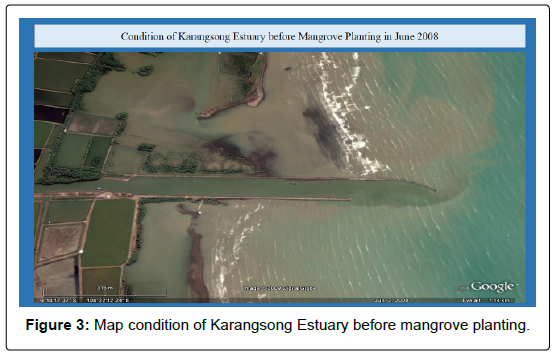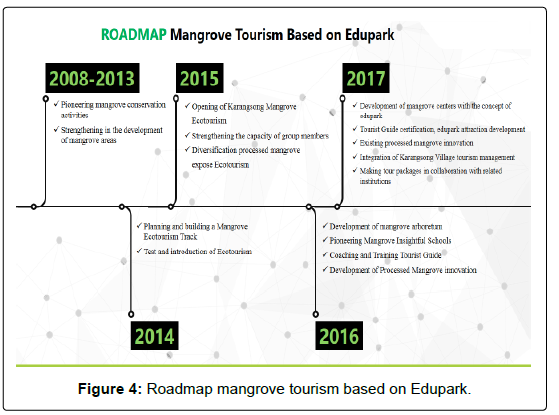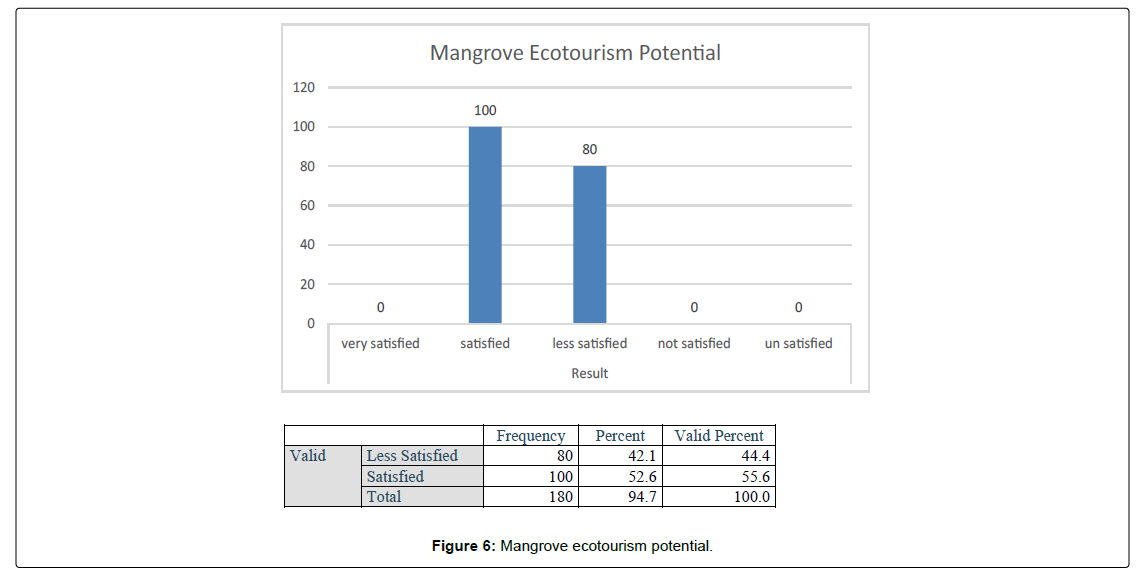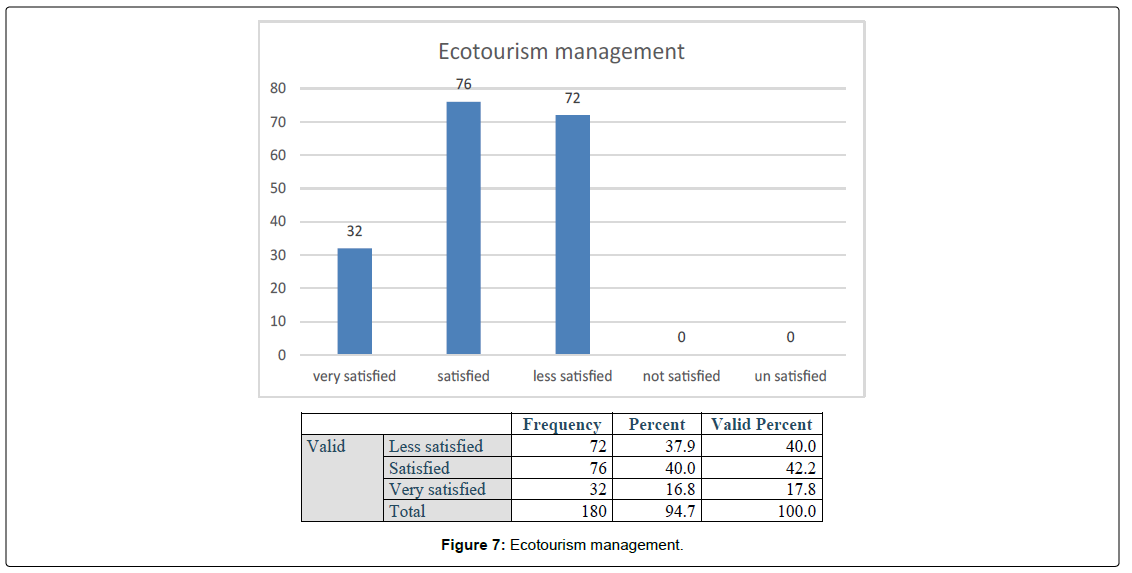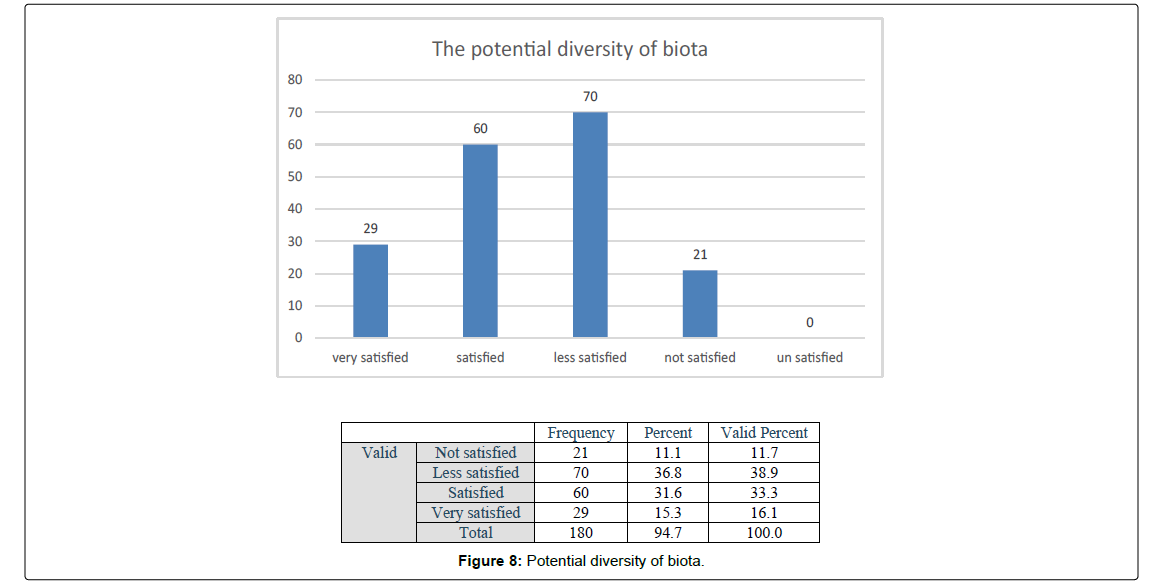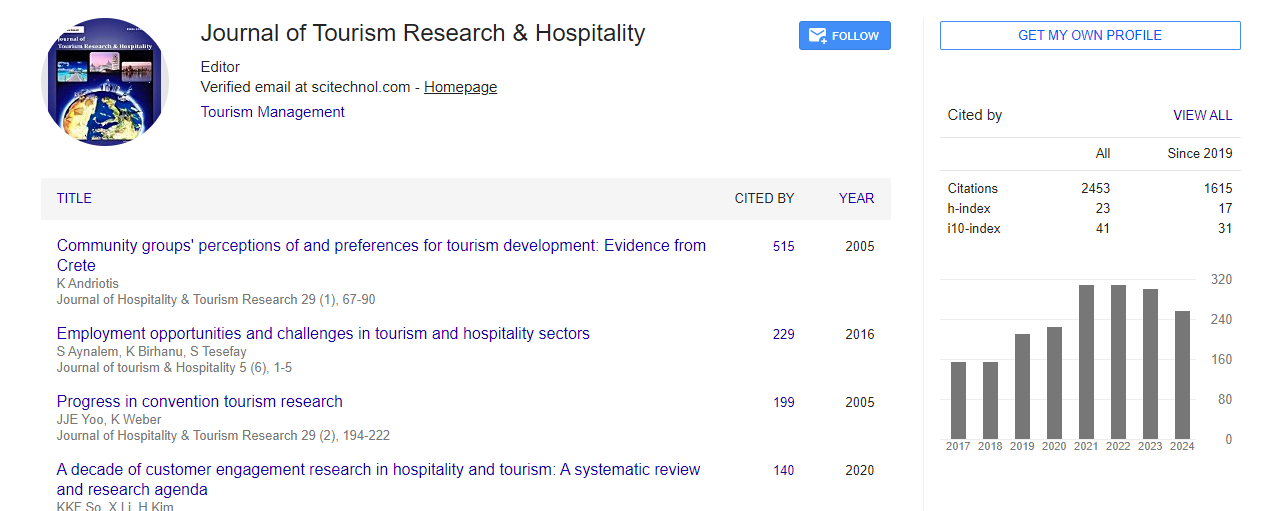Research Article, J Tourism Res Hospitality Vol: 10 Issue: 7
Tourists’ Satisfaction Level with The Mangrove Environment and Biodiversity: A Case Study of Mangrove Tourism Karangsong in Indramayu Regency West Java Province Indonesia
Donny Juliandri Prihadi1,2*, Zhang Guanghai1, Ruoxi Duan1, Ghulam M Lahbar1, Indah Riyantini2, Wahyuniar Pamungkas2 and Rafait M Memon3
1Department of Tourism Management, College of Management, Ocean University of China, Qingdao, 266100, P. R. China
2Department of Marine Science, Faculty of Fishery and Marine Science, Universitas Padjadjaran, Jatinangor, 45363, Indonesia
3Department of Accounting, College of Management, Ocean University of China, Qingdao, 266100, P.R. China
- *Corresponding Author:
- Donny Juliandri Prihadi
Department of Tourism Management, College of Management, Ocean University of China, Qingdao, 266100, P. R. China
Tel: +6281395274889
E-mail:donny.juliandri.prihadi@unpad.ac.id
Received Date: June 03, 2019; Accepted Date: July 14, 2021; Published Date: July 21, 2021
Citation: Prihadi DJ, Guanghai Z, Duan R, Lahbar GM, Riyantini I (2021) Tourists’ Satisfaction Level with The Mangrove Environment and Biodiversity: A Case Study of Mangrove Tourism Karangsong in Indramayu Regency West Java Province Indonesia. J Tourism Res Hospitality 10:7.
Copyright: © All articles published in Dental Health: Current Research are the property of SciTechnol, and is protected by copyright laws. “Copyright © 2021, SciTechnol, All Rights Reserved.
Keywords: Coastal Areas
Abstract
This study explores the perceptions of customers and Food and Beverage Managers (F&B) regarding the hotel restaurants’ performance during crisis periods. A total of fifteen semi-structured interviews were conducted with F&B managers. A self-administered questionnaire was used to collect the primary data from fifteen fivestar hotels in Greater Cairo in Egypt. A convenience sampling was used to collect the questionnaire. The findings indicated that there was not any standard action plan for F&B to follow during crises since 2011. The findings also indicated that the cost-saving plan was very effective and worked well during crises. This study also showed that customers were satisfied with the quality, quantity, and variety of food offered in those hotel restaurants during crises. However, customers were not satisfied with the variety of menu items and promotions during crisis periods. This research will provide a stepping stone for future academics who wish to expand knowledge of hotel operational procedures during crises in the Egyptian Hospitality industry. Recommendations are suggested based on the findings of this study.Keywords
Hotel restaurants’ performance; Operational procedures during; Crises; Five-star hotels
Introduction
Indonesia is a country rich in marine resources, with approximately two-thirds of its territory surrounded by water. Therefore, its tourism industry is a potential sector that needs to be developed [1]. Tourism is presently a global industry that involves hundreds of millions of tourists, serves as an engine for economic growth, and provides extensive employment. According to the UNWTO, in 2001, there were 698 million international tourists, and this accounted for relatively 10% of the world population; therefore, several countries rely on the tourism sector as a tool for economic development [2]. Furthermore, 1.4 billion international arrivals were reported in 2018.
This number was anticipated to be achieved in 2020 [3].
This tropical country is characterized by high biodiversity, various ecosystems such as coral reefs, mangroves, seagrass beds, sandy and rocky beaches, and dunes. It has approximately 17,466 islands, with only 16,065 registered in The United Nations. This means that the government needs to ratify the remaining 1,401 islands [1]. During the leadership of President Jokowi, the tourism sector was prioritized due to its high potential This was observed in its contribution to the country’s foreign exchange reserves, which was approximately USD 62.6 billion and the provision of 13 million jobs in 2018 [4]. Subsequently, from 2017 to 2018, Indonesia recorded the arrival of relatively 15.81 million (12.58%) foreign tourists. Nevertheless, the outbreak of COVID 19 in February 2020 led to a dramatic decrease in the number of foreign and local tourists, because of government policies on restricting movements to curb the virus.
A coastal zone is a transition between land and sea, which tends to affect the mainland and the ocean. It has two limitations, namely long-shore (parallel to the coastline) and cross-shore (perpendicular to the coastline) [5]. Also, several people prefer to live in these coastal regions, while tourists choose to travel long distances to visit coastal destinations [6].
The mangrove is a unique ecosystem located in coastal areas, beaches, and small islands of tidal surroundings at above-average sea level [7]. It also supports a variety of ecosystem services along tropical coastlines [8]. Irrespective of the fact that its utilization for travel and tourism destinations has not been adequately studied, the application of high-value and low-impact access to these important ecosystems is being considered. Currently, the mangrove ecosystem renders one of the world’s most relevant ecosystem services, in fisheries, carbon storage regulation and offers recovery services [8-13]. Consequently, one potential resource in this ecosystem attracts tourists, which are referred to as coastal, marine, or mangrove tourism. The Model of Mangrove Tourism in Figure 1 describes the importance of 3 mangrove regions. Furthermore, mangrove ecosystems have tremendous ecological and economic advantages and are beneficial to local communities located in tropical countries and temperate coastal areas [11]. In the past ten years, these regions have, “In the way of” development, caused large mangroves to disappear due to aquaculture, agriculture, and urban expansion [14-16].
The development of coastal conservation techniques is imperative; however, ecotourism is a form of marine resource management [17]. The essence of this concept is not to propose economic growth factors; instead, it is aimed to maintain a balance between conservation and the utilization of productive resource [18]. Marine tourism is a recreational activity that involves movement from one coastal environment to another and the utilization of all its resources; biodiversity and conservation pathways. In addition, it also supports biological and sustainable resources. It involves water and aquatic sports (usually in coastal waters), such as mangrove and beach tourism, recreational and underwater fishing, scuba diving, water skiing, windsurfing, marine park tours, and observation of wildlife including mammal activities in the deep sea; subsequently, sailing and voyage are highly notable [19,20]. Furthermore, coastal and marine tourism is expected to create a balance between the environment and the existing resources to ensure sustainable development. According to Damanik, J. dan Weber [21,22] a comprehensive survey of 253 votes conducted on the economic values of beach recreation, only 11 (4.6%) were rated, in contrast beaches were ranked (25.5%), coral reefs (22.2%) and mixed ecosystems (41.4%) which was determined to be dominant.
Tourism is one of the strategic factors of the local economy; therefore, it is particularly important in increasing domestic and foreign exchange income. Presently, the economic value of the marine industry is gaining full attention [23]. Tourism provides numerous benefits associated with supporting social and economic development in the environment additionally it aims for the ultimate strategic goals and achievements of the supposed “blue growth” (“Smart, Sustainable, Comprehensive Economic and Employment Growth of oceans, seas, and Coastal areas”). The mangrove ecotourism in Karangsong, Indramayu, has been managed for relatively ten years. Furthermore, its analysis needs to satisfy tourists in terms of facilities and resources in the area. Comprehensive management of the beach area undoubtedly increases the benefits of the mangrove ecosystem [11].
The definition of coastal (shore) excursions and marine tourism is a subject of attraction for potential sceneries (seascapes) and natural coastal landscape (coastal scenery). The Indonesian archipelago constitutes the world’s largest mangrove ecosystem with various ethnic and cultural diversity that extends to Sabang and Merauke. Presently, highly developed mangrove tourism offers tremendous potentials. Consequently, ecotourism in Karangsong is suitable for tourism; however, Pantai Lestari managers or local authorities do not know how best to promote the area. The objectives of the research are to find tourist satisfaction on mangrove ecotourism potential, ecotourism management, and potential diversity of biota in Karangsong Mangrove Ecotourism in Indramayu, West Java Province, Indonesia.
Indramayu Regency is located at 107°52 east longitude, 108°36 (BT), and 6°15 ‘-6°40’ south latitude (LS). It has an area of approximately 204,011 hectares, consisting of 31 administrative districts and 302 villages. According to the forest and plantation statistics conducted in 2017, it is among the most severely damaged mangroves in West Java. Based on the analysis of satellite image data, an area of 1,103 Ha was recorded in 2008, while the 8,023-hectare is a conservation forest [24]. Nevertheless, numerous mangroves developed from 2008 to 2017. A map of the mangrove location in KarangsongIndramayu is shown in Figure 2.
Materials and Methods
Problem formulation
The results from the research on mangrove tourism in Karangsong are properly established. However, many people are not aware of its existence in the Province of West Java. This study recommends input and strategic planning for the development of mangrove ecotourism in this regency.
Research design
This research applied a descriptive survey and quantitative methods. The descriptiveness of a research method is aimed at explaining the system or facts and the relationship between the phenomena that are being investigated [22]. Consequently, a quantitative approach was applied to examine tourists’ satisfaction.
Sample selection and data retrieval
Primary and secondary data in the form of interviews with stakeholders of tourist attractions centers, managers, and local tourism policies were utilized. Furthermore, accidental sampling, particularly for travellers, was also carried out. This was based on a random decision method, and anyone that encounters the researcher was used as a sample [25]. It was easy to navigate because the process of conducting (participating) it in the community during tourist activities is dependent on the respondents’ base data needed as a sampling approach in accordance with office/institution-specific objectives. Direct and indirect relationships were based on interviews and whether respondents are willing to provide the necessary information for the research activities and visits to the mangrove by the Karangsong stakeholders. The respondents used Microsoft Excel to analyze the questionnaires, and the survey subjects are visitors.
The sample consists of visits to the relatively 17-65 year old mangrove Karangsong tourist attractions, surrounding communities, and related institutions. Its estimated size is determined according to the large sample on the table. The absolute accuracy ratio is calculated to be 0.05, while its reliability is 95%, with 73 samples acquired to avoid loss. 10% of the sample is formulated by approximately 80 respondents. The sample is divided into a maximum of 165 visitors or tourists and 15 visits from related agencies. The samples obtained from the surrounding communities comprise of 3 marine officers and fishery professionals, 2 members of the Karangsong Village Office, and 10 officials of Pantai Lestari.
Analysis of data processing
Data processing was carried out using the IPA analysis tools (Importance performance analysis), a method for calculating the importance of product attributes based on consumers’ perspective and their level of performance, which is useful for business development. IPA methodology is designed to measure consumers’ satisfaction, interest, and implementation levels using a Likert scale (1-5 score), as shown in Table 1.
| The Importance of the Performance Level Score | ||
|---|---|---|
| Score | Important Levels | Performance levels |
| 1 | Dissatisfied | It is not very good |
| 2 | Not satisfied | Is not good |
| 3 | Less satisfied | Less well |
| 4 | Satisfied | Good |
| 5 | Very satisfied | Very good |
Results
General condition of research location
Mangrove Ecotourism in Karangsong Village, Indramayu Regency, is located in the Province of West Java, Indonesia. Presently, it protects fish farms and serves as a playground for people during the holidays. These potential marine resources need to be optimally organized and preserved to improve the well-being of the surrounding communities without interfering with environmental sustainability [1].
According to Figure 3, the coastal areas were subjected to abrasion before the planting of mangroves. Consequently, in September 2008, the community considered it necessary to start planting mangroves to curb the numerous damages, such as loss of fish ponds and farmers’ income. However, Karangsong Mangrove area finally succeeded in creating a mangrove ecosystem in 2014.
After the abrasion-affected region was transformed into a mangrove area, the local community decided to launch its opening in 2015 (Figure 4). below shows the Roadmap of the Karangsong Mangrove area from 2008-2017. Based on the sustainable tourism model, the main elements that need to be considered by destination managers are as follows [26].
1. Visitor - Welcomes, engages, and satisfies the needs and expectations of tourists or visitors.
2. Industry - Increase industrial profitability.
3. Community - Embrace and benefit the surrounding or local community.
4. Environment and Culture - Protect the environment and local culture.
The surrounding communities started a plantation in June 2008 to 2014 to protect their fish farms. Indramayu Regency is one of the coastal cities on the North-eastern corner of West Java Province that needs to be developed as a tourism destination. Karangsong consists of fish farms/ponds and a vast mangrove forest area of approximately 25 hectares. Tourism is the most important source of external revenue in the Caribbean, and it is usually developed in coastal zones. All facilities are shown on the map in Figure 5 below.
The Mangrove Ecotourism regions in Karangsong are classified into 3 types, namely Avicennia marina, Rhizophoramucronata, and Rhizophorastylosa. Recently, the community developed a new area called the Mangrove arboretum, “Botanical Garden,” in the western part of the ecotourism region. According to Mr. EkaTarika, the Manager Pantai Lestari, there are over 25 types of mangroves species in the botanical garden. Furthermore, numerous excellent activities such as walking, watching birds, beach travel, biota exploring, and boat tours, are conducted to attract tourists. In addition, they need to be tailored to the potential resources and allocation. Karangsong’s Mangrove Ecotourism region is quite suitable for tourism, with an adaptation index of 82.95% [18]. Conversely, other factors that fascinate tourists are distances between countries, attractions, communications (transportation, communications), relative costs (living costs and exchange rates), cultural ties, and political influences [27]. After investigating the suitability of the mangrove ecosystem, it was discovered that 55.6%of the tourists were satisfied, while 44.4% were less satisfied. This is shown in Figure 6 below.
This research is aimed to obtain satisfactory results from the management of ecotourism mangroves. In addition, it was discovered that some of the respondents, 42.2%, are satisfied (2), while 40% are less satisfied(3), and 17.8% are very satisfied (1). The result is shown in Figure 7 below. Notably, following the study on biodiversity, the percentage of tourists in the less satisfied category is 38.9% (3), those in the satisfied category is 33.3% (2), delighted (1) is 16.1%, and not satisfied (4) is 11.7%. The result is shown in Figure 8 below
Discussion
Figure 6 shows that the survey site has good mangrove ecotourism conditions, and the respondents seem to be satisfied. It was also discovered that the recent mangroves at the research site grew faster than in the previous year. Several attractions are related to other habitats and activities, not just mangroves. Since coastal landscapes are an essential resource, its assessment is a vital consideration in aerial comparisons. The activities and facilities within the ecosystem were used to filter and isolate the main features, which are considered as crucial factors [28]. Visitors tend to locate maps and facilities easily. The mangrove bamboo path was also refurbished to make walking safer, although several tourists prefer solid wood tracks because they are more reliable, and bamboo tends to break during the rainy season. Visitors also need to be entertained apparently, it is a means of satisfying the inner motivation and spur of human expression [29].
Mangrove management is often integrated into fisheries, forestry, and land-use systems, thereby causing its effectiveness to be more complex [30,31].
In Mangrove Ecotourism Karangsong, visitors cross the bamboo track in 25 minutes from start to finish. It also provides good living space, with various sizes of mangrove trees that make the surrounding attractive. This is one of the benefits of mangrove restoration, and visitors can enjoy the area, feeling safe and comfortable. Furthermore, this area also aims to create awareness of biota to the general public for mangrove support, living, protection, and breeding. Several signboards need to be strategically placed at Karangsong to help visitors understand mangrove areas better. Mangrove tourism is prevalent in communities, including areas where it is internationally limited, such as Indonesia, Iran, and Bangladesh [7,32].
Figure 7 shows that 42.2%, 17.8%, and 40% of the respondents are satisfied, very satisfied, and less satisfied, respectively. The management is impressed with the results and further reported that they are working towards making the mangrove ecotourism in Karangsong the first option for tourists with high expectations as well, because of the motives behind their experiences [33]. In addition, they also feel that tickets are cheap; only Rp 15,000 is required to enter the area. The ticket offices are equipped with various signboards and are responsible for delivering information, including those provided by multiple companies concerning different mangrove plantation, and living biota. It also provides facilities that help improve the location of the ecotourism region. After tickets have been purchased, the staff invites the tourists to board a boat to the mangrove ecotourism. The boat ride takes about 5-8 minutes, and immediately they arrive at the field. They are welcomed with maps on the signboards at the starting points that direct the visitors to the various facilities (toilet, mushola, worship /prayer room, etc.). Information concerning mangrove areas and different sites such as beaches and seating zones are easily accessible. At 5:00 PM, staffs call the attention of all the tourists to immediately board a boat, which takes them back to the ticket counter. The treatment of staff to visitors is amicable, and this leaves a lasting impression on the tourists from all over the globe [34]. The office offers regular training to improve work performance because employees need to perform these activities daily [35]. Mangroves need to be utilized in an environmentally friendly manner. A certain concept of ecotourism is that it requires community involvement to protect, maintain, and manage the ecosystem [18].
According to Figure 8, the study on the potential biodiversity in the biota showed that some tourists approximately 38.9% (3) were categorized in the less satisfactory rate, while 33.3%(2) is in the satisfaction rate category, 16.1% (1) in the very satisfying and 11.7%(4) in the not satisfied rate. Based on the results of the study, the ecotourism mangrove area has great diversity. This information is easily recognized and understood by tourists, while some lucky visitors tend to view the biota directly.
The respondents choose 38.9% because it is assumed that the reason for the less satisfaction category is the difficulty of seeing the biota. People acquire enough information from the existence of biodiversity in the mangrove area, such as animals and plants’ lifestyle, reproduction, habitat, beauty, and shape. This creates happiness and is beneficial to the general public and tourists [18,36]. Occasionally, when tourists visit the observation tower, a vast number of birds are seen on the mangrove trees while the root is submerged in water filled with unique gelodok fish (Periopthalamussp) and mangrove crab (Scylla serrata).
There are 5 objects of biota and 17 species that are associated with the mangrove forests in Karangsong, Indramayu, as shown in Table 2 below.
| No. | Object Biota | Type of Biota | |
|---|---|---|---|
| 1 | Fish | Gelodok fish (Periopthalamus sp) | |
| Mullet fish (Mugil dosumieri) | |||
| 2 | Crustacea | Mangrove crab (Scylla serrata) | |
| Violin crab (Uca sp) | |||
| 3 | Mollusc | Conus shell (Conus sp) | |
| Cassidula aurisfelis | |||
| Cerithidea cingulate | |||
| Cerithidea Pomacea | |||
| Telescopium sp | |||
| Mangrove shell (Polymesoda bengalensis) | |||
| 4 | Reptile | Monitor lizard (Varanus salvator) | |
Mangrove snake (Chryosopolea sp.)
|
|||
| 5 | Bird | White Heron (Bubulcus ibis kuntul) Blekok (Ardeola speciose) Curek (Calidris ruficollis) Kuntul (Egretta intermeding) |
The diverse mangrove biota includes fishes, crabs, mollusks, reptiles (lizards and snakes), and birds, which add value to these habitats. Bird diversity-based tourism is a tourist activity that seeks wild birds as the main source of attraction. These activities are generally carried out by researchers, nature lovers, students, and inhabitants of the community that are particularly interested in the survival of these birds. Bird watching activities are developed into wildlife photography and also tend to generate income. Some countries such as Kenya, Costa Rica, Nepal, and Thailand have made these activities an essential part of the tourism sector. Terrestrial animals lack specific adaptations like insects, snakes, birds, and primates; therefore, they find it difficult to acclimate to such environments [18]. The high-value potential is available through various ecosystem services [25]. There is a need to create public awareness on the importance of biodiversity as a natural resource, its function in ecological processes, as well as its role in social and cultural issues. In addition, this facilitates the development of conservation strategies. Specifically, the concept of sustainable development ensures the supply of biological resources.
The existing mangrove ecotourism area in West Java, Karangsong is properly developed and is the first of its kind in the province. This tends not to be possible, assuming the Pantai Lestari administrative community group had failed to manage the region. Pantai Lestari is a Community-Based Tourism (CBT) in KarangsongIndramayu. People involved in achieving protection and development goals need to modify the existing model to support the sustainability of mangrove tourism [31]. This situation was supported by the management of Karangsong village and the local administration of the Indramayu province. In 2017, Pantai Lestari paid a tax of Rp. 30 million; this means that Mangrove Ecotourism yields good cash flow. From a regional perspective, coastal tourism is important because it is one of the largest employers of labour in the workforce. According to EkaTarika (CBT Manager), over 50 employees manage the Karangsong mangrove ecotourism during the peak season, while 20 others manage it during the off-season, to prevent pollution, environmental degradation, and reduction of destructive livelihoods. A good management plan allows employees to provide information and create awareness for visitors to avoid degradation. Citing the recommendations by operations is in accordance with a nature-based setting. However, tourists are not completely engaged in other recommendations such as local participation and benefits, educational value, or conservation awareness. Improper operations tarnish the reputation of other ecotourism operators that are abiding by its principles.
The importance of tourism in major coastal areas was reviewed, and its environmental issues were also analysed. The coastal area is a complex zone with unique characteristics. Complexity is demonstrated by the existence of various users and regional entities with different interests and perspectives concerning the use and management of resources in these areas. Since culture is an important resource for sustainable development, the emphasis is placed on the ecological development of sustainable tourism itself, not only in ecology and economics but also in the sustainability of culture. In view of characteristics, a source management concept is known as the integrated coastal zone management (ICZM). Culture, economics, and ecological development are essential resources for sustainable development. Secondly, according to Burns and Holden [37] the concept of sustainable development, its concept adapts to the tourism sector and is a model for integrating the natural (location) and cultural environment (owner/host community), and tourists (visitor). The final aspect of the sustainable tourism growth policy that has been reconsidered is compatible with environmental stability [5]. These policies include: 1)Integrated national tourism and coastal management policy, which leads to sustainable development and improved supply and demand 2). National development policies for industry, energy, and agriculture need to be consistent with tourism policies to avoid excessive use of coastal resources, 3). Local governments are entitled to incentives and need to be encouraged to implement national environmental policies and provide strict standards for sensitive tourist destinations, 4). To achieve economic and environmental goals, land use policies need to be encouraged, 5). Necessary infrastructure needs to be valued from appropriate natural resource pricing, sewage charges, and the use of environmental services by tourists. Lands under development are supposed to have established integrated coastal zone management (ICZM) [5].
The policy shows that Karangsong mangrove ecotourism is in the right direction. However, management standards and quality need to be maintained [34]. Facilities such as promenades, toilets, information centres, observation towers, signboards, tracking, bird watching, boating, and 5 major wildlife categories were reported in this research [18]. Individuals who appreciate ecotourism are not confused by mass tourism. There are usually 4 facilities (boardwalk, observatory tower, information center, and board) in the Mangrove tourist area, and 8 significant activities, namely tracking and boating, as well as 6 wildlife species. According to these phenomena, relationships are developed by the interaction of tourists, entrepreneurs, governments, and communities in the process of attracting people and making it willing to return [10]. Subsequently, most tourists do not just want to have a vacation; they need to acquire knowledge [5].
Generally, tourists have special attributes, namely:
➢ Vacation in a natural location
➢ Knowledge of ecotourism
➢ The desire to meet with fellow tourists with similar interests and experience new activities
➢ Reasons for choosing a vacation destination, particularly natural factors and education
➢ Nature-based activities carried out while on vacation
➢ Contribute to the conservation and economy of the local community
➢ Travellers who are experienced in exploration
➢ Generally, it is highly educating
To increase the mangrove ecotourism adaptability index, reforestation is required to increase its density and thickness, with the path is identified from solid wood rather than from bamboo. Ecotourism includes community involvement to protect, maintain, and manage the mangrove ecosystem in an environmentally friendly manner; this is in accordance with the definition of ecotourism. In addition, these activities are expected to support community livelihoods [18]. Karangsong mangrove ecotourism managers need to implement an adaptive or flexible management plan, as well as be able to change and improve the program as new information emerges [27-39]. However, according to the geographical location and the market in the Mangrove Ecotourism, which primarily attracts tourists as well as the core tourism products, there is also a need for societal improvement and promotion [40]. All aspects of mangrove ecotourism make Karangsong a commercial area, thereby satisfying visitors.
Conclusion
This possibility causes the development of mangrove ecotourism in the West Java province and surrounding areas, thereby attracting both local and foreign tourists from Bandung, Ciamis, Tasik, Cirebon, Bogor, Sumedang, Majalengka, Bekasi, Jakarta, Tegal, Germany, France, and United Kingdom. According to the results from the analysis, the tourist satisfaction of Mangrove Ecotourism in Karangsong was 55.6%satisfied, while 42.2% of the respondents were satisfied with its management. Furthermore, 33.3% were satisfied with the potential biodiversity, particularly in the biota. The results of this study show that future researches require the development of sustainable management strategies. Therefore, there is a need for improved socialization and promotion in terms of geographic location and the mangrove ecotourism market. Alternative tourism management programs such as bird watching, boating, and beach activities need to be institutionalized.
References
- Prihadi DJ (2015) The existence of frog fish on the island of Nusa Penida, Bali province. J Aquatics 6: 187-197.
- Ramsar Cops Resolution (2019) New Guidelines for Management Planning for Ramsar Sites and Other Wetlands.
- UNEP (2014) World Conservation Monitoring Centre, United Nations Scientific and Cultural Organisation. London: United Nations University.
- World Travel and Tourism Council (2019) Economic Impact Reports.
- Olsen S and Patrick C (2000) What are we learning from tropical coastal management experiences?. Coast Manag 28: 5-18.
- Mcintosh RW (1986) Tourism, Principles, Practices, Philosophies. New York: John Wiley & Sons, Inc.
- Uddin MS, Steveninck VR, Stuip M and Shah MAR (2013) Economic valuation of provisioning and cultural services of a protected mangrove ecosystem: a case study on Sundarbans Reserve Forest, Bangladesh. Ecosyst Serv 5: 88-93.
- Donato DC, Kauffman JB (2012) Protocols for the measurement, monitoring and reporting of structure, biomass and carbon stocks in mangrove forests. Bogor, Indonesia. Working Paper CIFOR, Bogor, Indonesia.
- Spalding M, Parrett CL (2019) Global patterns in mangrove recreation and tourism. Marine Policy 110: 103540.
- Hutchison J, Manica A, Swetnam R, Balmford A, Spalding M (2013) Predicting global patterns in the carbon storage of mangrove forests. Conserv Lett 7: 233–240.
- Carter HN, Steffen SW, Hirons A (2015) An International Assessment of Mangrove Management Incorporation in Integrated Coastal Zone Management. Diversity 7: 74-104.
- Spalding MD, Kainuma M, Collins L (2010) World Atlas of Mangroves, Earthscan, with the International Society for Mangrove Ecosystems. Food and Agriculture Organization of the United Nations, the Nature Conservancy.
- Sanderman J, Hengl T, Fiske G, Solvik K, Adame MF, et al. (2018) A global map of mangrove forest soil carbon at 30 m spatial resolution. Environ Res Lett 13: 055002.
- Richards DR, Friess DA (2015) Rates and drivers of mangrove deforestation in Southeast Asia, 2000–2012, Proc. Natl Acad Sci Unit States Am 113: 344-349.
- Spalding MD, Ruffo S, Lacambra C, Meliane I, Hale LZ, et al. (2014) The role of ecosystems in coastal protection: adapting to climate change and coastal hazards. Ocean Coast Manag 90: 50-57.
- Castellanos-Galindo GA, Cantera JR, Saint-Paul U, Ferrol-Schulte D (2015) Threats to mangrove social-ecological systems in the most luxuriant coastal forests of the Neotropics. Biodivers Conserv 24: 701-704.
- Ketjulan R (2011) Sustainability of Haris Island Waters as a Marine Ecotourism Object. J Aqua Hayati 7: 183-188.
- Prihadi DJ, Riyantini I, Ismail MR (2018) Study of biophysical status and resources support marine tourism area of mangrove in IndramayuKarangsong. IOP Conf Ser Earth Environ Sci 162: 012026.
- Diakomihalis M (2007) Greek maritime tourism: evolution, structures and prospects. Maritime Transport: the Greek Paradigm. Res Transport Econ 21: 419-455.
- Honey M, Krantz D (2007) Retrieved from CESD: Global trends in coastal tourism. Marine Program. World Wildlife Fund, Washington DC.
- European Commission (2014) A European strategy for more growth and jobs in coastal and marine tourism. EC.
- Damanik J, Dan Weber HF (2006) Ecotourism Planning. Yogyakarta: PUSPAR UGM.
- Ehlers P (2016) Blue growth and ocean governance how to balance the use and the protection of the seas. WMU J Marit Affairs 15:187-203.
- BPLHD (2008) Marine Quality Status Study Report. Bandung, West Java.
- Salem ME, Mercer DE (2012) The economic value of mangroves: a meta-analysis. Sustainability 4: 359-383.
- UNWTO (2019).
- Burton R (1991) Travel Geography. London: Pitman Publishing.
- Miller ML, Auyong J (1991) Coastal zone tourism: a potent force affecting environment and society. Mar Policy 15: 75e99.
- Prihadi DJ, Nuryana A, Lili W, Ihsan EN (2017) Marine Tourism Management Strategy Special Interests Whale Sharks (Rhincodontypus) and Area Carrying Capacity in Cenderawasih Bay National Park, Nabire Regency, Indonesia. Proceedings of the National Symposium on the Conservation of Coastal Waters and Small Islands. Jakarta.
- Clark JR (1992) Integrated Management of the Coastal Zone; Technical Paper No.327; Food and Agriculture Organization (FAO): Rome, Italy.
- Clark JR (1996) Coastal Zone Management Handbook; CRC Press LLC: Boca Raton, Florida, USA.
- Ahmad S (2009) Recreational values of mangrove forest in Larut Matang, Perak. J Trop For Sci 21: 81-87.
- Cooper C, Fletcher J, Fyall A, Gilbert D, Wanhill S (2005) Tourism Principles and Practices 3rd, Essex. Pearson Educational Limited.
- OECD (1994) Coastal Zone Management. Integrated Policies.
- Torkildsen G (2001) Leisure and Recreation Management. Spon Press. Taylor and Francis Group.
- Parasuraman A (1986) Marketing Research. Reading: Addison Wesley Publishing Company.
- Burns P and Holden A (1997) Tourism: A New Perspective. Prentice Hall International (UK) Limited. Hemel Hempstead.
- FAO (1994) Food and Agriculture Organization of the United Nations. Mangrove Forest Management Guidelines; FAO Forestry Department: Rome, Italy.
- ISME (2019) Charter for Mangroves.
- Swarbrooke J (2001) The Development and Management of Visitor Attractions, 2nd edition. Oxford: Butterworth-Heineman.
 Spanish
Spanish  Chinese
Chinese  Russian
Russian  German
German  French
French  Japanese
Japanese  Portuguese
Portuguese  Hindi
Hindi 

